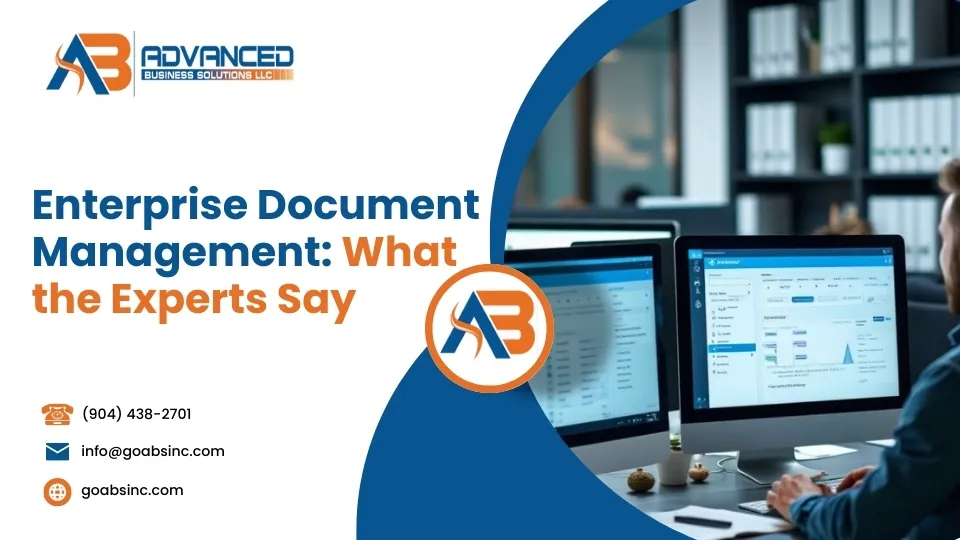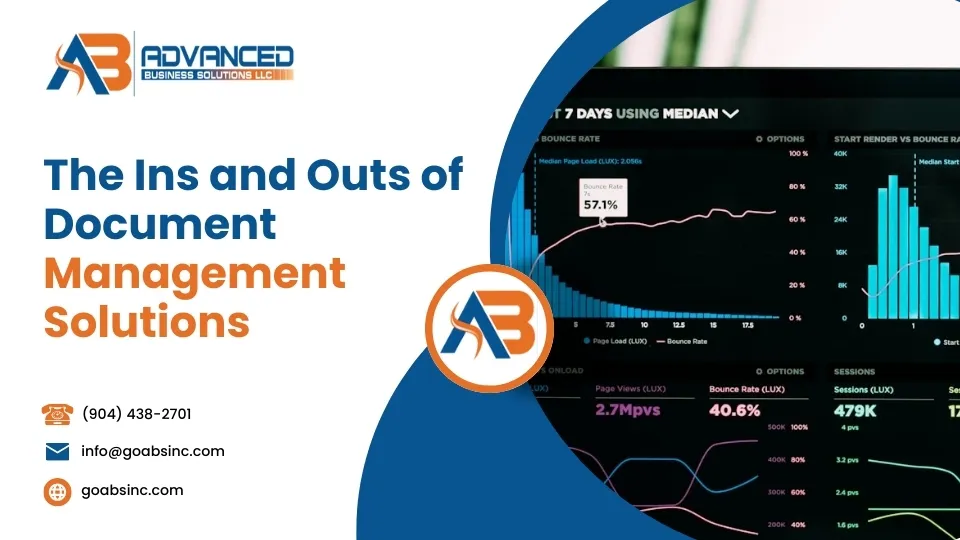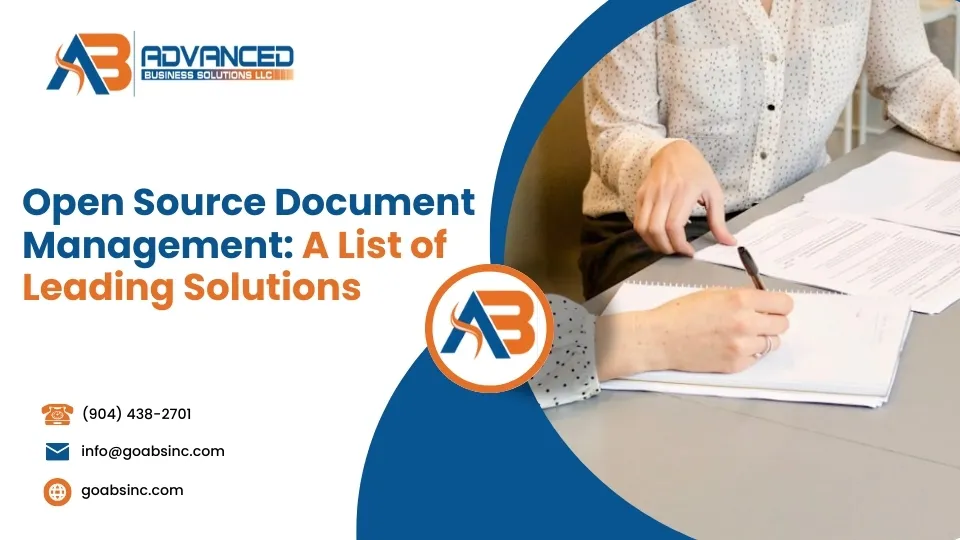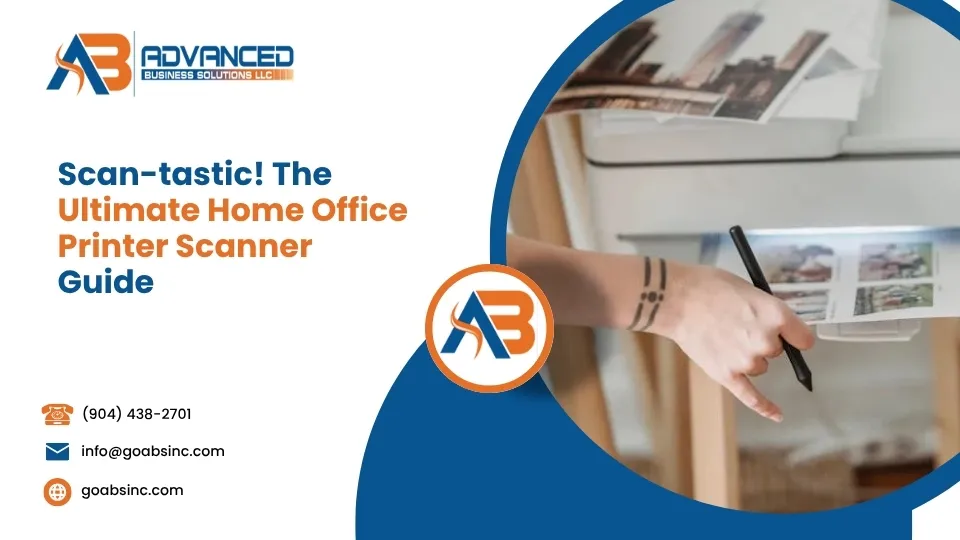Enterprise document management system is a term you might hear often, especially if you’re looking to streamline your office’s document processes. At its core, an enterprise document management system helps you organize, store, and retrieve documents efficiently. It’s designed to reduce clutter, make information easy to find, and keep your office running smoothly.
Key points to understand about enterprise document management include:
- Document Control: Keep track of document versions and edits.
- Compliance: Ensure that your document processes meet industry standards and regulations.
- Accessibility: Make documents easily accessible to authorized users, no matter where they are.
In today’s business world, managing documents effectively is crucial. With the right system, like an enterprise document management solution, you can ensure that your office operates smoothly, reduce downtime, and even automate routine tasks. This means more time to focus on growing your business and less time worrying about lost files or compliance issues.

Understanding Enterprise Document Management Systems
An enterprise document management system (EDMS) is more than just a digital filing cabinet. It is a comprehensive solution that manages the entire document lifecycle from creation to disposal. This includes capturing, indexing, storing, and retrieving documents. Let’s explore how these systems work and why they’re essential.
Document Lifecycle
The document lifecycle in an EDMS begins with document capture. Documents can be scanned from paper or imported digitally. Once captured, they are indexed with metadata like date, author, and keywords. This makes searching for documents a breeze.
After indexing, documents are stored securely, ensuring they are easy to find when needed. Version control is crucial here, as it ensures that everyone is working with the latest version of a document. This minimizes errors and miscommunications.
Finally, when documents are no longer needed, they can be archived or disposed of according to the organization’s policies. This is part of a well-managed document lifecycle.
Embracing Digital Change
Moving from paper to digital isn’t just about saving trees. It’s about efficiency and accessibility. An EDMS allows employees to access documents from anywhere, using any device. This flexibility is crucial in today’s remote and hybrid work environments.
Digital change also means integrating with other business applications. For instance, connecting your EDMS with tools like Microsoft Office or Salesforce can streamline workflows and increase productivity.
Compliance and Security
Compliance is a big deal, especially in regulated industries. An EDMS helps ensure that your organization meets industry-specific regulations and data protection laws. Features like audit trails, access controls, and security protocols are built into these systems.
For example, in the healthcare industry, compliance with regulations like HIPAA is non-negotiable. An EDMS ensures that sensitive information is protected and accessible only to authorized personnel.

In conclusion, understanding how an enterprise document management system works can transform how your organization handles information. By managing the document lifecycle efficiently, embracing digital change, and ensuring compliance, your business can operate more smoothly and securely.
Key Features of an Enterprise Document Management System
An enterprise document management system (EDMS) is packed with features designed to streamline document handling and improve organizational efficiency. Here are some key features that make an EDMS indispensable:
Version Control
Version control is a lifesaver when multiple team members work on a document. It tracks changes and updates, ensuring everyone accesses the most recent version. No more confusion or errors from outdated files. Plus, it keeps a clear audit trail of document evolution, which is crucial for compliance and accountability.
Document Indexing
Imagine searching for a needle in a haystack. Document indexing turns that haystack into an organized library. By assigning metadata like keywords, author, and date, an EDMS makes document retrieval quick and easy. This feature boosts productivity by reducing the time spent searching for files.
Security & Access Control
Security is a top priority for any organization. An EDMS offers robust security features, including access controls and encryption, to protect sensitive information. You can set permissions so only authorized personnel can view or modify documents. This selective access helps safeguard data and ensures compliance with industry standards.
Workflow Automation
Workflow automation eliminates the drudgery of manual processes. It automates tasks like document approvals and notifications, speeding up processes and reducing errors. For instance, a purchase order over a certain amount can automatically be forwarded to the right person for approval. This feature improves efficiency and keeps things moving smoothly.
Collaboration Tools
Collaboration tools in an EDMS allow teams to work together seamlessly, whether they’re in the same office or across the globe. Built-in messaging, commenting, and editing features facilitate real-time collaboration on documents. You can even control who sees what, thanks to customizable permissions. This fosters a collaborative environment while maintaining document integrity.
Incorporating these features into your document management strategy can significantly improve your organization’s productivity and security. An enterprise document management system is not just about storing documents; it’s about changing how your business operates.
Benefits of Implementing an Enterprise Document Management System
Implementing an enterprise document management system (EDMS) can revolutionize how an organization handles documents. Here are the key benefits:
Productivity
An EDMS boosts productivity by automating routine tasks and streamlining document workflows. Employees spend less time searching for files and more time focusing on their core tasks. According to research, organizations that switch to automated document management see a 30% decrease in time-to-close and a 50% decrease in document creation time. These improvements lead to faster decision-making and increased efficiency across the board.
Data Security
Data breaches are a significant concern for businesses. An EDMS improves data security with features like encryption, access controls, and audit trails. Only authorized users can access or modify sensitive documents, reducing the risk of unauthorized access or cyberattacks. By keeping critical information secure, an EDMS helps protect your organization’s reputation and build trust with clients.
Regulatory Compliance
Meeting regulatory requirements can be complex and time-consuming. An EDMS simplifies compliance by maintaining version control, audit trails, and access logs. These features ensure that your documents are managed according to industry standards and regulations, such as HIPAA. By automating records retention schedules and other compliance-related tasks, an EDMS minimizes the risk of noncompliance and potential fines.
Cost Reduction
While the initial investment in an EDMS might seem steep, the long-term cost savings are substantial. By eliminating paper-based processes and reducing manual labor, an EDMS cuts down on operational costs. It also reduces the need for physical storage space and lowers the risk of costly errors. In the long run, businesses often find that the savings outweigh the costs, making an EDMS a smart financial decision.
Implementing an enterprise document management system can transform your organization’s operations, enhancing productivity, security, and compliance. By reducing costs and streamlining processes, an EDMS provides a solid foundation for future growth.
Next, we’ll explore how to choose the right EDMS for your organization, ensuring it meets your unique needs and requirements.
How to Choose the Right Enterprise Document Management System
Selecting the perfect enterprise document management system (EDMS) for your organization involves careful consideration of several key factors. Let’s break down what you need to look for:
Needs Assessment
Start by identifying your organization’s specific document management needs. Do you require robust collaboration features, stringent compliance support, or advanced security measures? Understanding these needs will help narrow down your options and ensure the chosen system aligns with your strategic goals.
Scalability
Your organization is likely to grow, so choose an EDMS that can scale with you. This means it should handle an increasing volume of documents and users without compromising performance. A scalable system ensures that you won’t need to switch platforms as your business expands.
Integration
An effective EDMS should integrate seamlessly with your existing software stack. Look for systems that offer integration capabilities with popular business applications like CRM or ERP solutions. This ensures smooth data exchange and improves overall efficiency.
Customization
Every organization has unique processes and workflows. An EDMS with customization options allows you to tailor the system to fit your specific requirements. Whether it’s custom workflows or personalized dashboards, flexibility is key to maximizing the system’s effectiveness.
Pricing
Evaluate the pricing structure of each EDMS option. Consider not just the initial cost but also ongoing expenses, such as maintenance and support. Some systems offer subscription-based pricing, while others might require a one-time investment. Ensure the chosen solution fits your budget without compromising essential features.
Choosing the right enterprise document management system is crucial for optimizing your document processes. By focusing on your specific needs, scalability, integration, customization, and pricing, you can make an informed decision that supports your organization’s growth and efficiency.
Next, we’ll address some frequently asked questions about enterprise document management systems, helping you understand the nuances and benefits of these powerful tools.
Frequently Asked Questions about Enterprise Document Management Systems
What is the difference between EDM and ECM?
While both EDM (Enterprise Document Management) and ECM (Enterprise Content Management) involve managing information, they focus on different types of data. EDM primarily deals with structured data, such as documents that follow a specific format or template. Think of invoices or contracts. It manages the entire lifecycle of these documents, from creation to archiving.
On the other hand, ECM encompasses a broader range of content, including unstructured data like emails, videos, and social media posts. ECM systems handle the capture, storage, and retrieval of both structured and unstructured content, making them more comprehensive in scope.
How does an EDMS support regulatory compliance?
An enterprise document management system (EDMS) plays a crucial role in ensuring regulatory compliance. Here’s how:
- Version Control: This feature keeps track of document changes, ensuring that only the latest versions are used. It helps prevent errors and maintains consistency.
- Audit Trails: EDMS provides detailed records of who accessed or modified a document and when. This transparency is vital for compliance audits, helping organizations demonstrate adherence to regulations.
- Access Controls: By setting permissions, an EDMS ensures that only authorized personnel can view or edit sensitive documents. This protects confidential information and supports compliance with data protection laws.
Why are cloud-based solutions popular for document management?
Cloud-based document management solutions are gaining popularity due to several key advantages:
- Accessibility: With cloud-based systems, you can access documents from anywhere, anytime, using any device with internet connectivity. This flexibility supports remote work and global collaboration.
- Collaboration: Cloud solutions often come with built-in collaboration tools, allowing multiple users to work on documents simultaneously. Features like real-time editing and commenting improve teamwork and productivity.
- Security: Many cloud providers offer advanced security measures, including data encryption and regular backups. These features protect documents from unauthorized access and data loss, ensuring that your information remains secure.
Incorporating an enterprise document management system into your organization can streamline operations, improve security, and support compliance. Understanding the differences between EDM and ECM, as well as the benefits of cloud-based solutions, can help you make informed decisions about your document management strategy.
Conclusion
At Advanced Business Solutions, we understand the transformative power of a robust enterprise document management system (EDMS). Our document management solutions are crafted to boost productivity, improve data protection, and ensure smooth regulatory compliance for businesses of all sizes.
Productivity Improvement
Switching to an EDMS can significantly improve your organization’s productivity. By automating routine tasks and providing quick access to documents, your team can focus on more strategic activities. As McKinsey & Company Research suggests, by 2025, employees will have more freedom to engage in innovation and collaboration. This shift is made possible by the efficiency gains from using a comprehensive document management system.
Data Protection
In an era where data breaches are increasingly common, protecting your information is more important than ever. Our solutions offer advanced security features, including access controls and encryption, to safeguard your sensitive data. By maintaining thorough records of document access and modifications, we help ensure compliance with evolving legal standards. This proactive approach minimizes the risk of unauthorized access and potential data breaches.
Regulatory Compliance
Navigating the complex landscape of regulatory requirements can be daunting. Our EDMS solutions simplify this process by providing essential tools like version control and audit trails. These features ensure that your documents meet compliance standards, reducing the risk of costly penalties. With our system in place, you can confidently demonstrate adherence to regulations during audits.
Incorporating an enterprise document management system from Advanced Business Solutions is not just about managing documents—it’s about changing your business operations. By improving productivity, enhancing data protection, and ensuring compliance, our solutions empower your organization to thrive in a competitive landscape.
Ready to take the next step? Explore our document management solutions today and see how we can help your business succeed.











Comments are closed